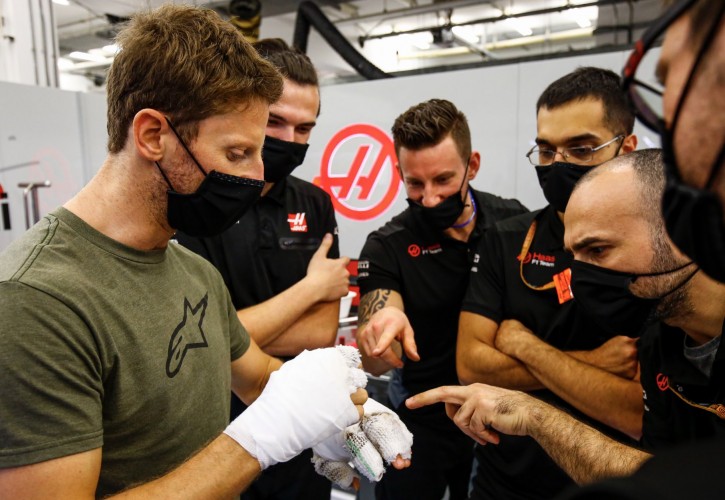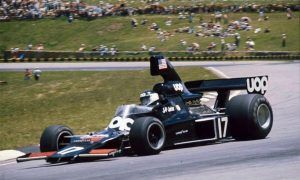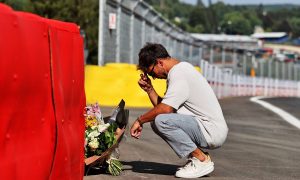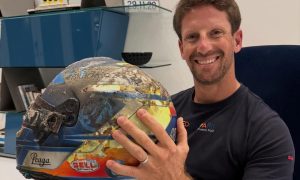
Romain Grosjean says 'many grey areas' were brightened by his Bahrain crash in terms of motorsport safety, but the Frenchman says there is still more to learn.
The former Haas driver miraculously survived a fiery 60G impact with the barriers at Sakhir on the opening lap of the Bahrain GP.
Save for a few burns to the back of his hands, Grosjean emerged practically unscathed from the dramatic crash and the subsequent blaze.
Grosjean knows that the Halo played a vital role in sparing him the worse, while his protective equipment - overalls, gloves and helmet - also fulfilled its purpose.
"I think there are many things we learn from an incident," he said. "And in my case, we are lucky that I am alive, that I can talk and that I remember everything. I’m not sure it’s a good thing for me.
"But I do remember everything, and I believe some grey areas from safety in motorsport already have been kind of understood. But I see more."

Haas F1 Team partner MindMaze is a global leader in brain technology with a mission to accelerate humanity’s ability to recover, learn and adapt.
The company which also works with McLaren has developed through its MindDrive unit a special connected balaclava that captures a driver's key neural signatures, data that can be transmitted in real time to trackside medical teams in the event of an accident and convey potentially life-saving information.
Grosjean admitted to being puzzled by the fact that he did not pass out during his crash, and the Frenchman believes that he perhaps owes that to his brain which he believes may offer some answers to a few remaining questions that linger over his Bahrain horror crash.
"In every incident in motorsport, you learn a lot," he said. "There are many grey areas, questions, that have been answered by my accident. And the next big step to me is to understand what’s happening in the helmet, the brain
"Physically we’ve seen that I came out of the car intact with, yes, a bit of burning on my hands and we can improve safety on the gloves that’s for sure. That’s going to be a step.
"But also what’s happening in the brain of the driver? With MindDrive, I believe in my accident, we would have understood what was the interaction between my brain, my helmet, the headrest, and why I didn’t lose consciousness.
"In a 60G impact, you should lose consciousness – even for a few seconds. You shouldn’t be as aware as I was, and that saved my life.
"But I would like us to understand, with sensors on the brain when there’s an incident, what can we do better on the helmet and headrests and safety so the driver, even with big impacts, stays conscious for whatever work he has to do [to escape]."
Gallery: The beautiful wives and girlfriends of F1 drivers
Keep up to date with all the F1 news via Facebook and Twitter







